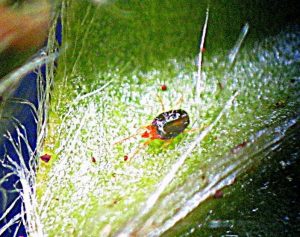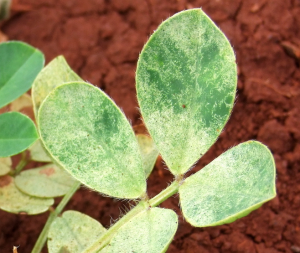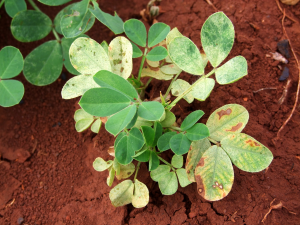Peanut mite (Paraplonobia sp.) outbreaks have been widely reported in Burnett peanut crops from Kingaroy to Coulston Lakes. This is not surprising as these mites are favoured by prolonged hot dry weather as has been experienced lately.
The first sign that these mites are present are plants with pale leaves. On closer inspection, fine feeding stipples are evident on the damaged leaves. At 1.5mm, the adult mites are larger than two-spotted mites, and are dark with red legs and a red head. They also lack the two dark spots that characterize two-spotted or spider mites.
They are quite elusive, dropping quickly off the plants as you approach them. Consequently you need to slide a dustpan (or equivalent) under the infected plants very quickly if you want to collect specimens.
Unlike two-spotted mites, these mites are easily controlled with dimethoate, which is registered in peanuts for this pest at 350mL/ha. The nominal threshold is set at 30% of plants infested but action may be needed at a lower percentage of infestation if the infection level is increasing rapidly.
Peanut mites do not like heavy rainfall, and in the absence of actual rain, good control can be achieved by overhead irrigation.
Note that both peanut mites and spider mites can be flared if non selective insecticides are applied against other pests. Indeed, in the Bundaberg region there is at least one report of a spider mite problem in a crop previously sprayed three times for helicoverpa with methomyl, which is very hard on beneficial insects.
Photographs by Hugh Brier, DAF Kingaroy



